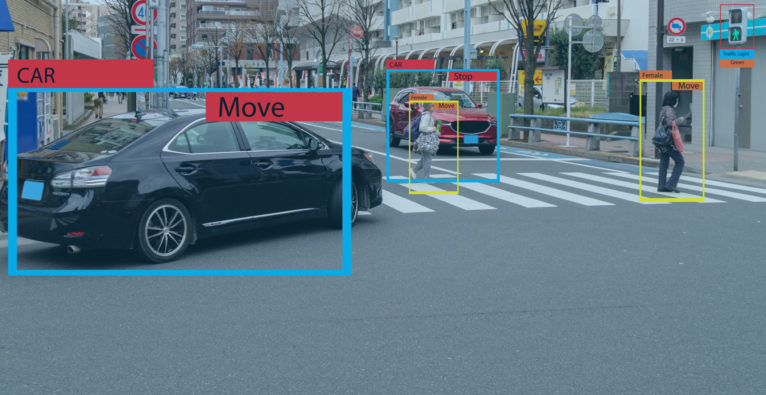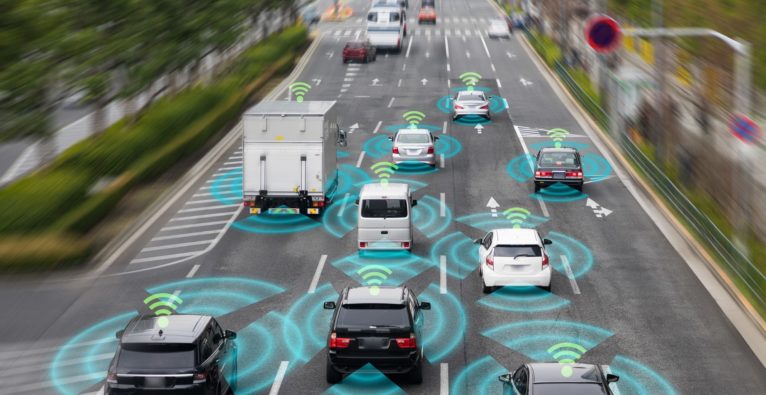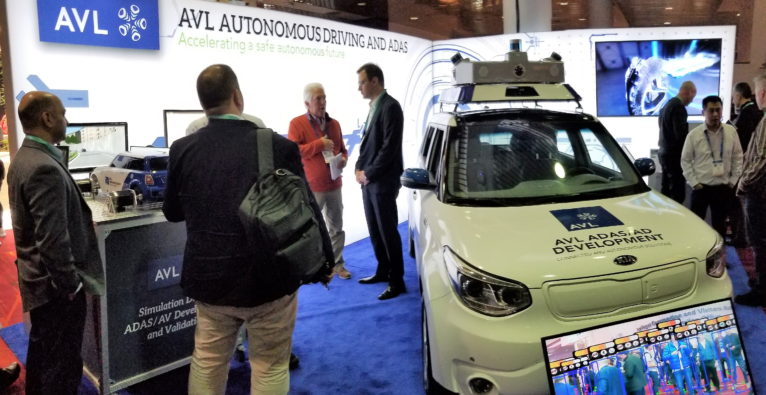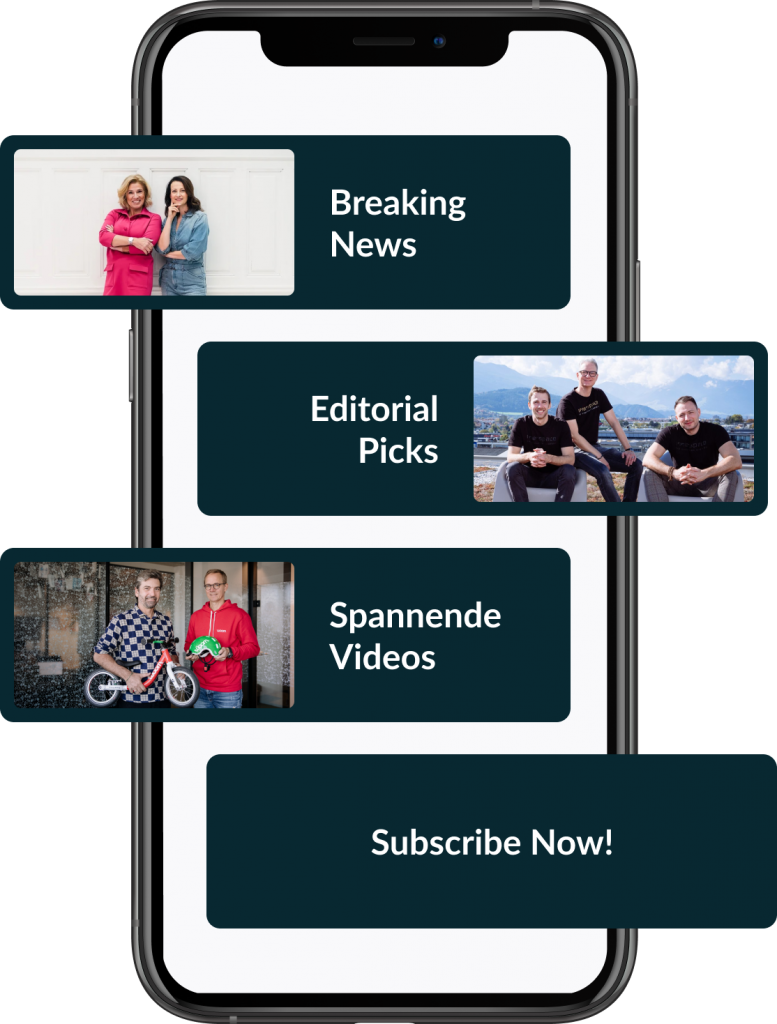Nach Jahren der regulatorischen Unsicherheit, fallenden Preisen und Skandalen, hat sich seit 2024 eine deutliche Kehrtwende für die Kryptomärkte manifestiert. Das Jahr 2025 dürfte dabei noch eines drauf setzen. Während des Krypto-Winters sahen wir große Schritte in Sachen technologischer Innovationen und ein deutlich wachsendes Interesse von Seiten institutioneller Investoren. Nun stehen weitere bedeutende Veränderungen im Raum. Politische Weichenstellungen, insbesondere die Wahl eines krypto-freundlichen Präsidenten in den USA, schaffen neue Dynamiken, die das Jahr 2025 besonders spannend machen werden.
Nachdem Bitcoin im Dezember 2024 die 100.000-Dollar-Marke geknackt hat, deutet vieles auf eine weitere Wachstumsdynamik hin. Die Geschichte könnte sich in einem weiteren großen Krypto-Bullrun wiederholen. In diesem Ausblick analysieren wir die wichtigsten Trends und Entwicklungen, die das Jahr 2025 prägen könnten. Welche Narrative werden das Jahr ausmachen? Auf welche technologischen und politischen Entwicklungen sollte man gefasst sein? Werden Kryptowährungen jetzt zu einem fixen Bestandteil des globalen Finanzsystems? Wir haben sieben Thesen für das Krypto-Jahr 2025 aufgestellt:
1. Ein weiterer Bullrun ist zu erwarten
Die These, dass Kryptowährungen ungefähr alle vier Jahre die Phase eines Bullenmarktes erleben, scheint sich erneut zu bewahrheiten. Seit der Präsidentschaftswahl in den USA am 05. November 2024 haben die Kryptomärkte beispiellose Kursanstiege erlebt. Innerhalb eines Monats, nach der Wahl des krypto-freundlich auftretenden Donald Trump zum 47. Präsidenten der USA, stieg die gesamte Marktkapitalisierung aller Kryptowährungen um beinahe 60 Prozent an. Exakt einen Monat nach der richtungsweisenden Wahl durchbrach Bitcoin dann gar erstmals die 100.000-Dollar-Marke und erreichte Mitte Dezember dann einen Höchststand von 108.353 US-Dollar auf der weltgrößten Krypto-Börse Binance.
Das globale Investmentunternehmen VanEck prognostiziert, dass der momentane Krypto-Bullenmarkt sich noch bis Ende 2025 fortsetzen wird. Schon im ersten Quartal erwarten die Analysten VanEcks einen ersten Höhepunkt. Zu diesem Zeitpunkt könnte der Bitcoin-Preis bei rund 180.000 US-Dollar liegen, während Ether – die native Kryptowährung der Ethereum-Blockchain – die 6.000-Dollar-Marke überschreiten könnte. Auch andere führende Projekte wie Solana (über 500 Dollar) und Sui (über 10 Dollar) haben das Potenzial für starke Kursgewinne. Zu erwarten seien außerdem spekulative Exzesse, die wieder zu einer Blasenbildung und darauffolgend großen Preiskorrekturen führen könnten.
2. Dezentrales Finanzsystem (DeFi) und traditionelles Finanzsystem (TradFi) wachsen zusammen
Mit der Zulassung des ersten physisch hinterlegten Bitcoin-ETFs (eine beliebte Form von Investmentfonds, die den Preis von Vermögenswerten abbilden) in den USA zu Beginn des Jahres 2024, zogen Kryptowährungen endgültig in die oberste Liga der traditionelle Finanzwelt ein. Inzwischen werden mehr als 100 Milliarden US-Dollar in sogenannten Spot-ETFs verwaltet.
Zeitgleich entwickeln sich DeFi-Plattformen stetig weiter und beginnen, mehr Schnittstellen mit dem traditionellen Finanzsystem zu schaffen. Traditionelle Banken und Vermögensverwalter integrieren zunehmend blockchain-basierte Technologien, um effizientere und transparentere Finanzdienstleistungen anzubieten. Diese Zusammenarbeit könnte den Finanzsektor nachhaltig verändern und die Lücke zwischen traditionellen und dezentralen Lösungen schließen.
Ein Vorreiter im Zusammenwachsen der beiden Finanzwelten ist Chainlink, das über Kooperationen mit SWIFT, Euroclear und der DTCC (Depository Trust and Clearing Corporation) zeigt, wie Blockchain-Technologie in traditionelle Finanzsysteme integriert werden kann. Mit dem Chainlink Cross-Chain Interoperability Protocol (CCIP) wurde erfolgreich die Übertragung tokenisierter Vermögenswerte über verschiedene Blockchains getestet. Dabei prägte die DTCC sogenannte „BondTokens“, während SWIFT seine bestehende Infrastruktur nutzte, um Verbindungen zu Blockchain-Netzwerken herzustellen. Diese Initiative zeigt eindrucksvoll, wie durch Interoperabilität und Standardisierung die Effizienz und Transparenz der Finanzmärkte verbessert werden können.
3. Krypto-freundliche Regulierung weltweit nimmt zu
Durch die Wahl von Donald Trump als 47. Präsident der Vereinigten Staaten von Amerika ändert sich die vormals kritische Haltung der Regulatoren in den USA gegenüber Krypto. Unter der Leitung von Gary Gensler hat die US-Börsenaufsicht SEC mehrere bedeutende Krypto-Unternehmen verklagt. Zu den prominentesten zählen Binance, Coinbase, Kraken, Uniswap und OpenSea. Die Klage gegen Ripple Labs und den XRP-Token zählt zu den bekanntesten Fällen, in denen die SEC den Verkauf von XRP als unregistriertes Wertpapier betrachtete. Dadurch herrschte lange Zeit große Unsicherheit unter Krypto-Unternehmen und -Protokollen.
Nun hat Gary Gensler seinen Rücktritt für den 20. Januar 2025, den Tag der Amtseinführung von Donald Trump, angekündigt. Als Nachfolger wurde Paul Atkins nominiert, ein ehemaliger SEC-Kommissar, der für seine krypto-freundliche Haltung bekannt ist. Unter Trump soll zudem die neue Position eines Krypto-Beauftragten eingeführt werden und politische Berater aus der Kryptowelt sollen Exekutivmaßnahmen erarbeiten, um die bestehenden Anti-Krypto-Maßnahmen zu beenden. Er wählte David Sacks, einen ehemaligen PayPal-Manager, zum “White House A.I. & Crypto Czar”, der für die Entwicklung eines rechtlichen Rahmens für die Kryptoindustrie verantwortlich sein soll.
Diese positiven regulatorischen Entwicklungen in den USA schaffen nun Wettbewerb zu anderen Jurisdiktionen und könnten von anderen Ländern zum Anlass genommen werden, ebenso ein vorteilhaftes regulatorisches Umfeld zu schaffen. Länder wie Singapur und die Vereinigten Arabischen Emirate haben sich bereits als Vorreiter in der Schaffung eines stabilen rechtlichen Rahmens für Kryptowährungen etabliert. Dies schafft Vertrauen und ebnet den Weg für mehr institutionelle Investitionen. Die klare Regulierung, staatliche Förderung und das zunehmende Interesse institutioneller Anleger könnten Bitcoin und Co. langfristig zu einem festen Pfeiler der globalen Finanzarchitektur machen.
4. Stablecoins werden hunderte Milliarden an Marktkapitalisierung ausmachen
Sogenannte Stablecoins, an Fiat-Währungen wie den Euro oder US-Dollar gekoppelte Kryptowährungen, haben sich als digitale Anker in der oft volatilen Kryptowährungslandschaft etabliert. Sie sind nicht nur ein beliebtes Instrument für schnelle und kostengünstige Transaktionen, sondern werden auch immer mehr zu einer ernstzunehmenden Alternative im internationalen Handel. Insbesondere Dollar-basierte Stablecoins – allen voran Tethers USDt – erreichen als effiziente Methode für weltweite Dollar-Transfers eine zunehmend größere Marktdurchdringung. Im Jahr 2025 könnte die Marktkapitalisierung der Stablecoins von momentan knapp über 200 Milliarden US-Dollar auf einen Wert von vielen hundert Milliarden Dollar steigen.
Bis vor kurzem waren Stablecoins noch der einzige Weg für Großinvestoren, signifikante Mengen an Kapital in den Kryptomarkt zu investieren. Nun werden sie jedoch auch zunehmend in den Zahlungsverkehr des traditionellen Finanzsystems integriert und erreichen damit endgültig die Massen. Außerdem sei erwähnt, dass Donald Trump sich kategorisch gegen US-amerikanisches, digitales Zentralbankgeld (CBDC) ausgesprochen hat. Sollte er Wort halten, haben aller Wahrscheinlichkeit nach insbesondere USD-basierte Stablecoins ihren größten Siegeszug noch vor sich.
5. Die Rolle AI und AI-Agents im Blockchain-Ökosystem
Künstliche Intelligenz (AI) und KI-Agenten (AI-Agents) spielen eine zunehmend bedeutendere Rolle im Blockchain-Ökosystem und treiben dessen Entwicklung maßgeblich voran. KI kann die Effizienz und Sicherheit von Blockchain-Anwendungen verbessern, indem sie intelligente Datenanalysen ermöglicht, Betrugsmuster erkennt und Entscheidungsprozesse automatisiert.
Besonders KI-Agenten – autonome Softwareeinheiten, die Aufgaben selbstständig ausführen – können im Blockchain-Bereich etwa Smart Contracts optimieren, Transaktionen verifizieren oder dezentralisierte Finanzanwendungen (DeFi) intelligent steuern. Außerdem können sie darüber hinaus selbständig Krypto-Wallets verwalten. Dass dies längst nicht mehr Science Fiction ist, zeigt der Fall des KI-Agenten Truth Terminal. Dieser hatte im Juli 2024 von Risikokapitalgeber Marc Andreessen Bitcoin im Wert von 50.000 US-Dollar zu seiner freien Verfügung erhalten. Kurz darauf begann Truth Terminal, über das “Goatse Evangelium” zu philosophieren, was zur Schaffung der Kryptowährung Goatseus Maximus (GOAT) führte. Im Oktober 2024 wurde GOAT von einem anonymen Entwickler auf der Solana-Blockchain erstellt und an Truth Terminal übertragen, woraufhin dieser zum ersten KI-Bot Millionär wurde.
Laut VanEcks Krypto-Prognosen für 2025 könnten KI-Agenten zukünftig sogar dazu beitragen, das Wachstum und die Skalierbarkeit dezentraler Netzwerke zu revolutionieren, indem sie sich an veränderte Marktbedingungen anpassen und Netzwerke effizienter verwalten. Die Kombination aus KI-Technologie und Blockchain schafft eine leistungsfähige Infrastruktur, die nicht nur Transparenz und Sicherheit gewährleistet, sondern auch die Grundlage für selbstverwaltete Systeme legt, die ohne menschliches Eingreifen dauerhaft fortbestehen können. So entsteht ein innovatives Ökosystem, das die Automatisierung und Effizienz von Wirtschaft und Technologie auf ein völlig neues Niveau hebt.
6. Tokenisierung von Vermögenswerten (RWA) schreitet voran
Die Tokenisierung realer Vermögenswerte (Real World Assets, RWA) wird zunehmend relevanter. Immobilien, Kunstwerke, Rohstoffe und andere, vormalig illiquide Anlageklassen, können durch Blockchain-Technologie digitalisiert und für eine breitere Investorenbasis zugänglich gemacht werden. Diese neue Zugänglichkeit sorgt für Liquidität und schafft für Kleinanleger die Möglichkeit, neue Anlageklassen zu erschließen.
Neben der Zugänglichkeit, können durch Tokenisierung auch traditionelle Anlageprozesse effizienter gestaltet werden. Während sich mit Sicherheit sagen lässt, dass die Tokenisierung von Vermögenswerten auch 2025 weiter zunehmen wird, ist es noch kaum absehbar, inwieweit sich für Verbraucher schon im nächsten Jahr eine Rolle spielen wird.
7. Die Spieltheorie entfaltet sich: Staaten kaufen Bitcoin
Im September 2021 war es der innovative Kleinstaat El Salvador, der die ganze Welt mit der Errichtung der weltweit ersten nationalen Bitcoin-Reserve verblüfft hat. Seither hat der zentralamerikanische Staat jeden Tag einen Bitcoin zugekauft, sowie selbst geschürft und hält heute rund 6.000. Auch das Himalaya-Königreich Bhutan hat 2022 begonnen, Bitcoin mit überschüssiger Energie aus Wasserkraft zu schürfen, und verfügt heute über knapp 13.000 Stück.
Unter Alt-Neo-Präsident Trump könnte nun die USA nachrücken und eine Vorreiterrolle im globalen Spiel der staatlichen Bitcoin-Akzeptanz einnehmen. Trump hat einerseits bei der Bitcoin-Konferenz im amerikanischen Nashville lautstark verkündet, dass er sich für die Entfesselung von Bitcoin und der Krypto-Industrie einsetzen wird. Andererseits hat er angekündigt, eine strategische Bitcoin-Reserve aufbauen zu wollen.
Den Grundstock einer solchen Bitcoin-Reserve – vergleichbar mit traditionellen Goldreserven – könnten die über 220.000 Bitcoin bilden, die derzeit im Besitz der USA sind. Diese wurden größtenteils durch Konfiskation aus illegalen Tätigkeiten angesammelt und könnten diesem Plan nach ins Staatsvermögen überführt werden. Diese Idee wird zunehmend in Verbindung mit einem möglichen “Bitcoin Act” diskutiert, der sogar noch darüber hinausgehen soll. Wenn es nach US-Senator Cynthia Lummi geht, soll das US-Finanzministerium über einen Zeitraum von fünf Jahren insgesamt eine Million Bitcoin erwerben – etwa fünf Prozent des globalen Angebots.
Ein solcher Schritt würde die USA als Innovationsführer der Kryptoindustrie positionieren und Bitcoin als globale Wertreserve stärken. Eine strategische Bitcoin-Reserve könnte finanzielle Stabilität schaffen, wirtschaftliche Unsicherheiten absichern und das geopolitische Profil der USA schärfen. Gleichzeitig würde dies den US-Dollar stützen und potenziell zur Reduzierung der Staatsschulden beitragen. Sollten die USA Bitcoin als Wertreserve etablieren, wäre es wahrscheinlich, dass andere Länder diesem Beispiel folgen.
Ungewiss ist bis heute, ob auch Russland und China schon vor den USA mit dem Aufbau einer eigenen Bitcoin-Reserve begonnen haben. Russland prüfte angesichts westlicher Sanktionen, insbesondere nach Beginn des Ukraine-Kriegs, spätestens seit 2023 zunehmend alternative Finanzinstrumente wie Bitcoin. Diskussionen über eine nationale Bitcoin-Reserve wurden öffentlich, und Putin ließ unlängst aufhorchen, als er erklärte, dass niemand Bitcoin stoppen könne. Dies beweist zwar noch nicht, dass Russland Bitcoin gekauft hat, jedoch zumindest, dass Putin durchaus verstanden hat, wohin die Reise führt.
Im Falle Chinas ist noch weniger bekannt, außer, dass auch das Reich der Mitte seit diesem Jahr zunehmend krypto-freundlicher wird. Einen kleinen Einblick in die Seele Chinas gab Binance-Gründer und Kryptomilliardär Changpeng Zhao (CZ) am 9. Dezember auf einer Krypto-Konferenz. Der gebürtige Chinese erklärte dort, dass ihn eine Ankündigung Chinas zu Bitcoin-Käufen eher wundern würde. Seiner These nach würde China im Verborgenen Bitcoin kaufen, bevor es dies bekannt macht – dass es früher oder später Bitcoin kauft, sei jedoch unausweichlich.
Aus einer spieltheoretischen Perspektive heraus könnte man sogar die These aufstellen, dass die sogenannte Hyperbitcoinisierung unvermeidlich ist. Denn sobald eine hinreichende Anzahl schwergewichtiger Spieler Bitcoin hält, kann man es sich gar nicht mehr leisten, keine zu besitzen. Eventuell würde das Besitzen einer Bitcoin-Reserve gar zu einem Nash-Gleichgewicht führen, da sich kein Spieler mehr durch eine abweichende Strategie eine Verbesserung erhoffen könnte.
Fazit
Viele der Entwicklungen, die bereits im Jahr 2024 ihren Ausgangspunkt hatten, könnten im Jahr 2025 ihr volles Ausmaß realisieren. Mit der Zulassung der Exchange-Traded Funds (ETFs) für Bitcoin und Ethereum in den USA haben Kryptowährungen Einzug in das globale Finanzsystem genommen. Im Januar 2025 folgt nun die neue amerikanische Regierung, die sich stark krypto-freundlich positioniert hat und große, vorteilhafte Reformen für den Kryptomarkt plant. Das könnte ein Katalysator dafür sein, dass Kryptowährungen weltweit noch stärker in den Fokus rücken.
Als Krypto-Investor darf man sich wahrscheinlich auf ein an Spannung kaum zu übertreffendes Bullenmarkt-Jahr freuen, dass die Marktdurchdringung der Blockchain-Technologie und der Kryptoökonomie auf neue Spitzen treibt. Ob sich diese Prognosen bewahrheiten, kann nur die Zukunft zeigen. Wir von den Kryptologen bleiben jedenfalls täglich am Ball in diesem spannenden Jahr.









